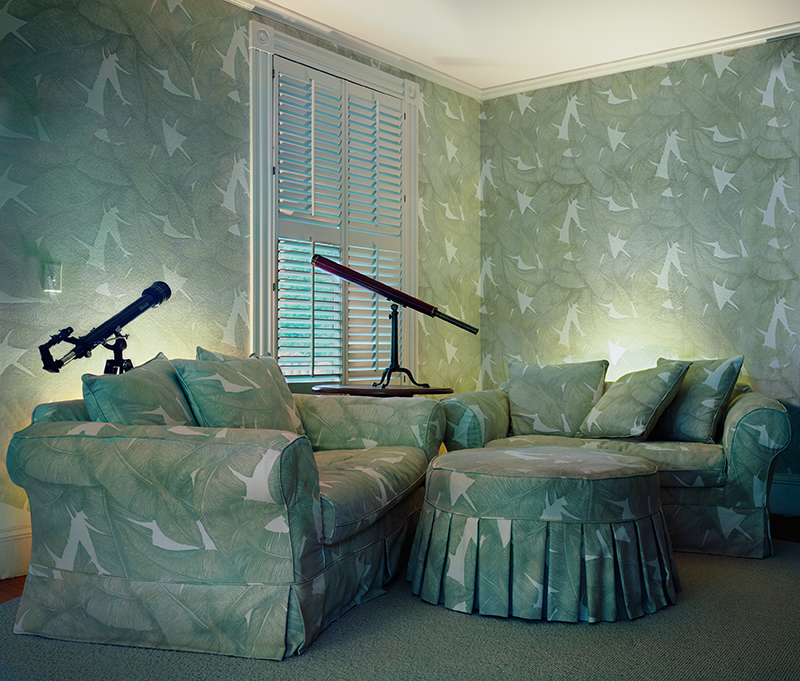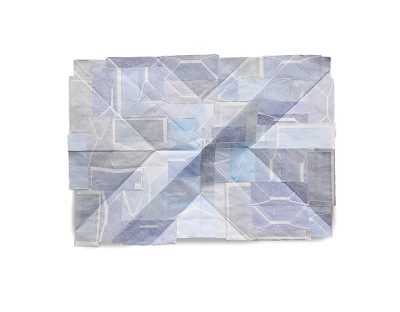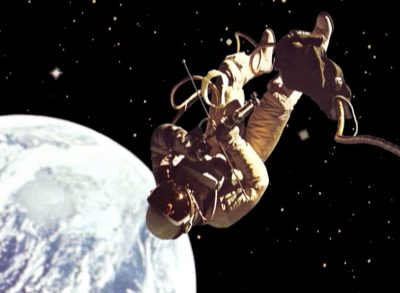
Another Valley: Granary Art Center
Art
The two-hour drive from Salt Lake to the Granary Art Center in Ephraim is quite familiar to me. I was a student at Snow College nearly a decade ago and have made this journey countless times. The eastern valley opens as you leave I-15 from Nephi through a winding canyon. Each time I make this trip, familiar as it is, the vastness of Sanpete County overwhelms me. Though I know where I am going and have no need for a map, I still manage to feel a little lost. When I make it to Granary, I notice this feeling again—the sensation of being encumbered by the weight of my various travels here.
The main floor exhibit at Granary is Jean Richardson’s Destination Unknown. Richardson takes paper envelopes and connects them, folding them together into large, quilt-like blankets. Most are smaller, folded into paper maps with no actual “map”—challenging the concept of a “map” by taking traditional map-folding techniques and creating a familiar but functionally strange object, sculptures that collage the artifacts of travel. Stray marks on postal envelopes double up so finely that they create a deep sense of pattern and even zen. These are marks that meld but lead to nowhere—marks that mesmerize.

Every piece plays to some concept of what it means to have traveled. One work, “Perambulate,” is draped over a wooden stand, flexibly dormant but drooping. Another, “Traversed,” is made of manila envelopes once used, adorned with stamps and barcodes. “DO NOT BEND,” several folders read, but each are nonetheless folded at one point or another. There is such residue of travel, of being handled, and some smaller pieces, like “Channel,” have a feeling of origami unfolded, unraveled from origin.
Granary’s second-floor space houses Sarah Malakoff’s Second Nature, a selection of photographs taken of the intimate but forgotten spaces of the home. Each photo depicts a space in a house where one might sit or otherwise spend idle time in, usually a chair or a small nook, one even a boat-themed minibar. In every photo, something frames something else, usually in the form of a window to frame the exterior from the interior.
Maybe this sounds pedestrian, but Malakoff’s work captures the overlooked dynamic between interior and exterior. “Untitled Interior (blizzard)” depicts a cozy, red chair lined up against three windows to an outside that is completely frozen over—a sense of warmth over ice. “Untitled Interior (deer couch)” shows a simple coffee table and couch, adorned by a blanket with an image of a deer looking at us. Above rests a painting of a meadowy river path. You start to understand Malakoff’s fascination—often, we attempt to siphon the wildness of the exterior into a comfortable interior. It’s the subject’s tacit acknowledgement of the object’s allure and power that makes Second Nature a worthy meditation on space. “Untitled Interior (binoculars)” may exemplify it best, a rocking chair and binoculars facing outside toward a lush forest teeming with uncontained vitality.

Finally, Granary’s cabin space houses Kelly Sears’ Signaling Techniques, comprising two short films that make use of historical found footage and are animated with the goal of creating narratives relevant to contemporary social discourse. The first film, Pattern for Survival, is cut constantly with stilted animation between footage—some of people in workout videos, some wrapping tourniquets or treating cuts or even pointing a gun at the viewer. Text from the US Army Survival Guide overlays the images in vaguely unnerving assertions: “Control bleeding,” or, “Anticipate fears,” “Learn to make yourself comfortable in less than ideal conditions.” It starts to feel threatening. “Security takes priority.” “You can use bone as an effective weapon.” It is jarring and anxious, addressing the viewer without regard for comfort.
Sears’ second film, The Drift, is my favorite piece of Granary’s current showing. The short tells us the fictional story of the drift, the eerie sound found by early astronauts, a sound that eventually lured several away from their vessel and into the abyss. We scroll through vintage images from the space-race era, and a narrator describes the time’s fervor of the unknown. As astronauts disappear and the government investigates, they find the drift, the song of emptiness. And as the signal makes its way home, it infects more people, creating the drifters, those affected by the siren song who become consumed with the freedom of emptiness. Eventually, the government jams the signal, and the drifters become isolated. “We were told to look away from the drifters and even the sky,” the narrator says.
This narrator in The Drift makes subtle shifts in the way he describes humanity’s obsession with space and its secrets, sometimes providing what seems like a colonialist critique and other times lamenting the loss of interest in the unknown. We don’t hear the drift, but we feel it. The film moves slowly and lingers on its images of astronauts and drifters, slowly rippling out of themselves as they give themselves over to the song.
As I leave Ephraim, the full moon crests the eastern mountain. My day at Granary took place in this wide valley through which many pass and some stay. The exhibits here each explore the idea of travel and presence: the anxiety and compulsion to travel, to document and to frame—to have been somewhere and, years later, still be unraveling what it all means. You can see each of these exhibits at Granary Art Center (granaryartcenter.org) through Jan. 26.